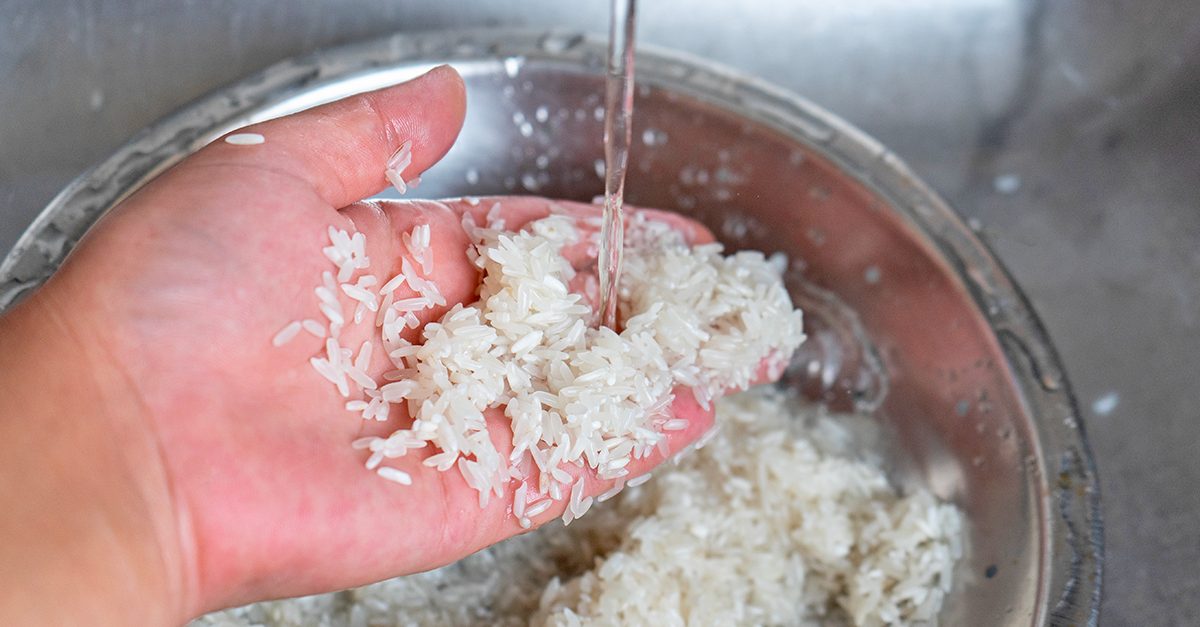13 Ways You’re Using Your Kitchen Appliances Wrong
We frequently make mistakes with our most-used kitchen equipment, like our dishwasher, microwave, and other essential tools.
;)
We frequently make mistakes with our most-used kitchen equipment, like our dishwasher, microwave, and other essential tools. Apparently we’ve been doing it wrong all these years!We frequently make mistakes with our most-used kitchen equipment, like our dishwasher, microwave, and other essential tools.
Find out the 13 errors we are making every day, and how to fix them.
1. Putting Square Containers in the Microwave

Rectangular or square containers are a bad idea for microwaving food, as the corners attract more microwave energy, meaning that the food in these areas becomes overcooked. Try using a round container, which will allow the food to cook more evenly.
2. Holding Knives the Wrong Way

It’s a scary thought, but most of us are holding our kitchen knives wrong! Don’t just wrap your hand around the handle – hold your thumb and index finger on the sides of the blade. This grip is supposed to help you get more precise cuts.
3. Using Your Oven Drawer for Storage
Better get those pans out that you’ve been keeping in there for years, and find them another home. That oven drawer is actually supposed to be used as a broiler.
4. Measuring out the Wrong Amount of Spaghetti
Have you ever wondered what that big round hole in the middle of your spaghetti serving spoon is actually for? Turns out, it’s to help you measure out the correct amount of dry spaghetti. Simply fill the hole with sticks of spaghetti, and when it’s full, that’s one serving.
5. Running Your Garbage Disposal With Hot Water

Hot water temperatures in your sink water can reach up to 120 degrees Fahrenheit, and when it’s that hot, it can cause the food to melt into a thick paste. This gross paste will clog up your disposal unit, so start rinsing the food off your plates and into the disposal using cold water instead.
6. Not Adjusting Your Stand Mixer
The beaters of your stand mixer can become misaligned over time. There should be a space the thickness of two sheets of paper between the beater and the bottom of the bowl. If yours is more or less than that, lift the head and turn the screw on the neck to the left to raise the beater, or to the right to lower it.
7. Organizing Plates in the Dishwasher Incorrectly

There is a strategy to placing your dirty dishes in the dishwasher to maximize the cleaning power. A University of Birmingham study discovered that the best area to put your plates in the dishwasher depends on the type of food they are covered with.
The middle of the dishwasher gets the strongest spray of water, which is ideal for carb-based messes like potatoes or pasta. However, the detergent is at highest concentration at the edge of the machine, when it flows back down like a waterfall. This spot is ideal for protein-based stains, like eggs, which need a bit more time to soak.
8. Using Your Blender and Food Processor Interchangeably

Each utensil has different chopping capabilities. Blenders have duller blades with powerful motors, and food processors have sharper blades with less-powerful motors. Use your blender for smoothies, drinks, and creamy soups, or anything that needs a smooth, even consistency. Use your food processor for hard foods like nuts and garlic, as it is ideal for making foods with a chunkier texture, such as pesto.
9. Opening the Lid of Your Slow Cooker to Check on the Food
All this does is let out the heat and screw up the cooking times, so resist the urge to peek or give it a quick stir until there’s less than an hour of cooking time left. If your pot is between half and three-quarters of the way full, the dish will cook fine, so leave it alone.
10. Salting Food Before Microwaving

Microwave energy is attracted to salt, so if you’ve already seasoned the top layer, more heat will be sent there. This will dry your food out quickly, so add salt after you’ve microwaved, or mix it through the dish before cooking to avoid dryness.
11. Closing the Oven Door When Broiling

If you do this, you could be causing steam and heat to build up. When you leave the door open, it vents the steam and lets your food get nicely crusted. Letting the hot air out also ensures that the heat is concentrated on the top of the food, instead of baking the entire dish.
12. Always Leaving Your Toaster on the Same Setting
Different breads require different heat settings to toast. White and sweet breads toast quickly, heavier ones like rye need longer. Slices from the same loaf can even need the settings adjusted after a few days. As bread dries out, the general rule is that it needs less time in the toaster.
13. Putting Your Ingredients Into the Blender in any old Order

The order that you add your ingredients can make a difference to whether your blender keeps stalling after every few seconds. Start with a liquid base, or yogurt, and then layer your ingredients from the smallest to the largest. Keep the toughest bits, such as ice, at the top. The liquid will help the blades to run smoothly without snagging on the tough ingredients.
;Resize,width=767;)
;Resize,width=712;)
;Resize,width=712;)
;Resize,width=712;)
